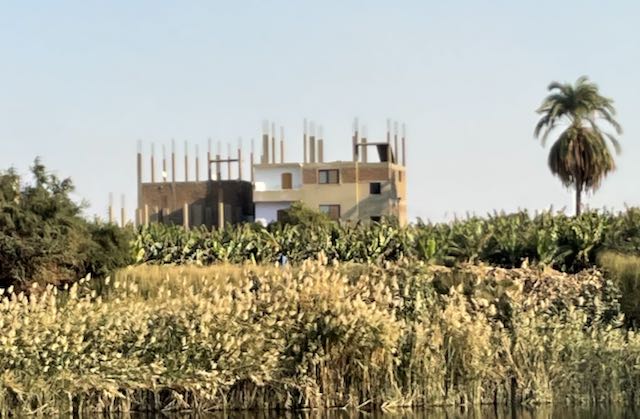Contrary to the view so often held, the great monuments of Egypt were not built by Hebrew slaves nor by slave labor of any kind. Skilled and unskilled Egyptian workers built the palaces, temples, pyramids, monuments, and raised the obelisks as paid workers. In most cases, the labor was provided by famers who were having to wait out the wet season when the Nile River would flood its banks and make farming impossible until the water receded. Many of these were skilled artisans who were honored to work on the various temples as a tribute to the Gods. From the period of the Old Kingdom of Egypt the great rulers of Egypt created some of the most impressive cities, temples, and monuments in the world and these were all created by collective Egyptian effort. Two principal kinds of temple can be distinguished—cult temples and funerary or mortuary temples. The former accommodated the images of deities, the recipients of the daily cult; the latter were the shrines for the funerary cults of dead kings.
There are many examples of these great monuments and temples throughout Egypt from the pyramid complex at Giza in the north to the temple at Karnak in the south. Among these, the mortuary temple of Queen Hatshepsut (1479-1458 BCE) at Deir el-Bahri stands out as one of the most impressive. This was our first stop today.
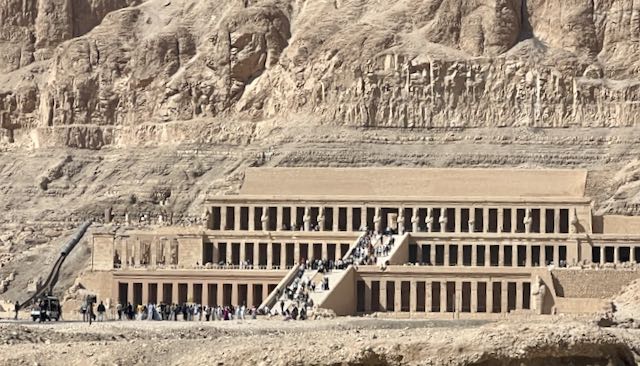
The Mortuary Temple of Hatshepsut is one of the most beautiful temples of Ancient Egypt. Located at the head of the valley. beneath the peak of the mountain. Hatshepsut was an intriguing character. She initially ruled as regent for her step-son Thuthmosis III but promoted herself to the role of pharaoh instead of passing power to him when he came of age. Her temple is one of the most striking monuments in Ancient Egypt even in its semi-ruined state. It has a very modern looking design – something we might see built today not 3500 years ago. Egypt prospered during her reign and was at peace.
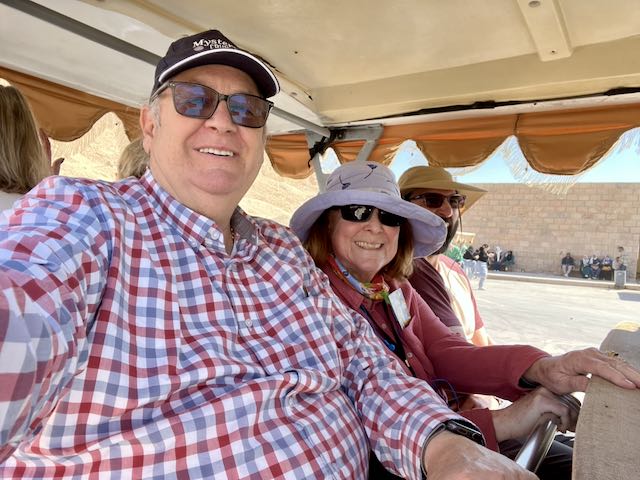
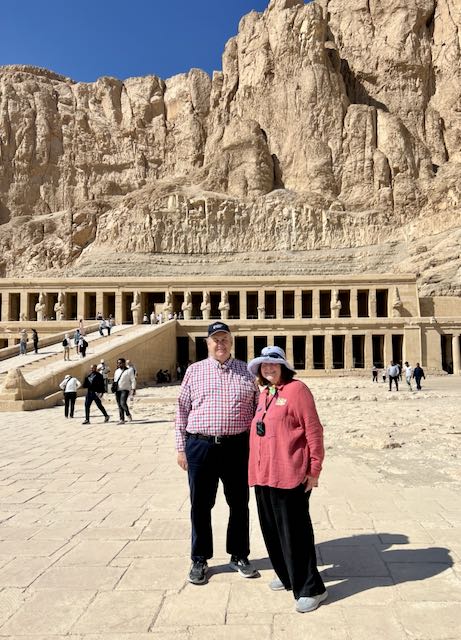
A shuttle to the entrance and a walk to the building.
Hatshepsut was a female pharaoh who had herself represented pictorially as a male. She served as co-regent with her nephew Thutmose III (c.1479-1425 BCE).
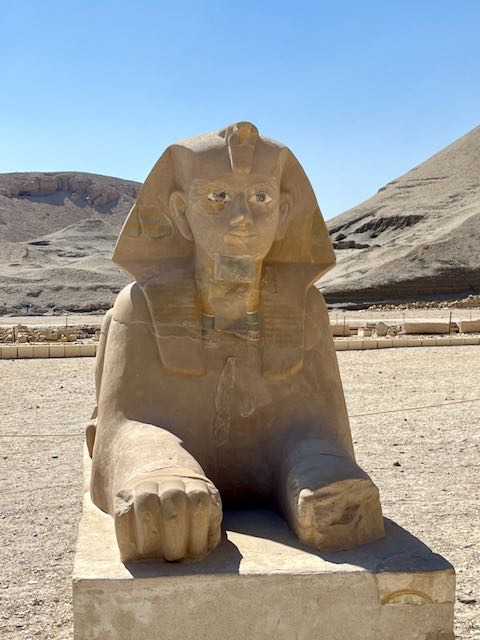
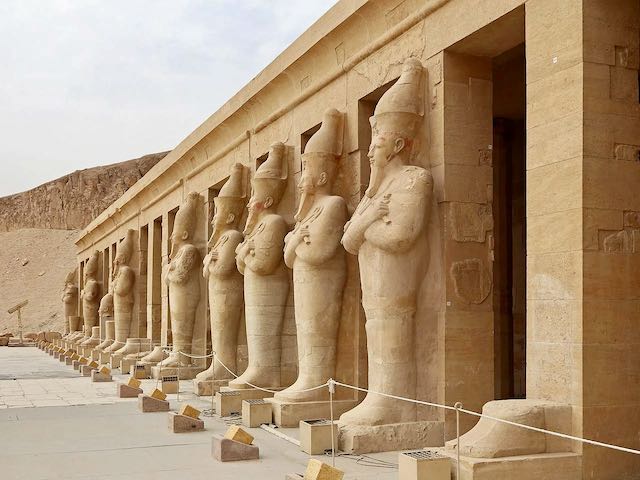
Hatshepsut, an admirer of Mentuhotep II’s temple had her own designed to mirror it but on a much grander scale and, just in case anyone should miss the comparison, ordered it built right next to the older temple. The granite quarry has what was to be the tallest obelisk made of a single stone, but a crack appeared during finishing. Had it been finished, it would have weighed 1,287 tons, and stood at a height of around 138 feet, taller than any other ancient Egyptian obelisk. He stepson later destroyed or defaced many of her monuments, but nature seemed to join him with the obelisk.
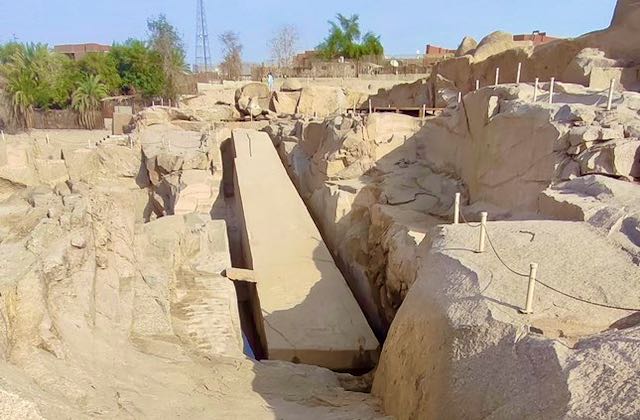
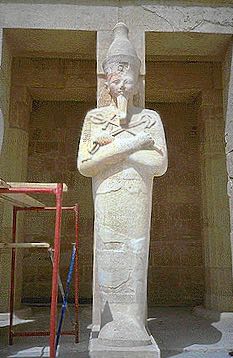
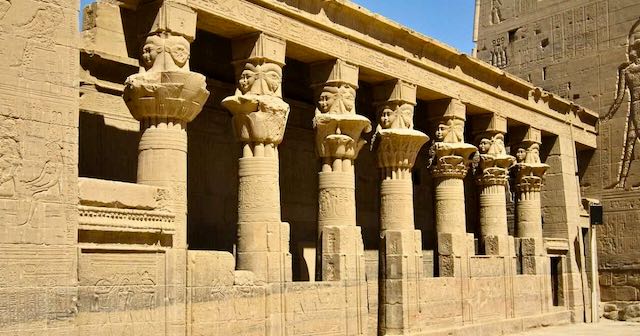
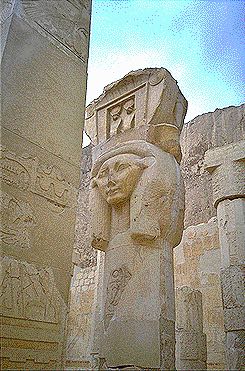
Hatshepsut was always keenly aware of ways in which to elevate her public image and immortalize her name; the mortuary temple achieved both ends.
After our visit, back to the ship and it began to set sail and to have lunch. Lunch, today, was on the sun deck with various stations serving pizza, burgers, fries, salads and of course desserts.
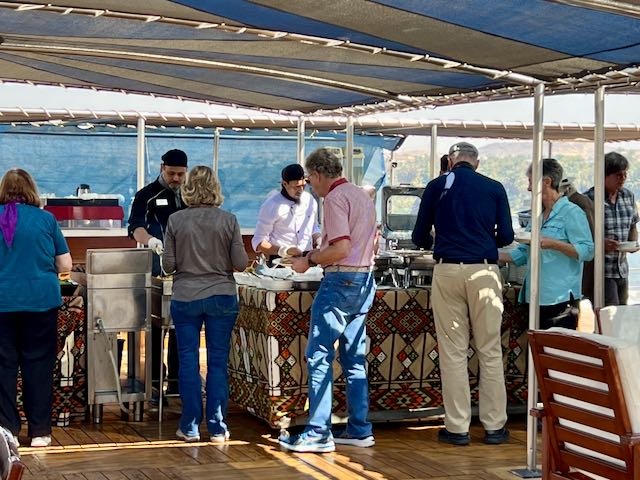
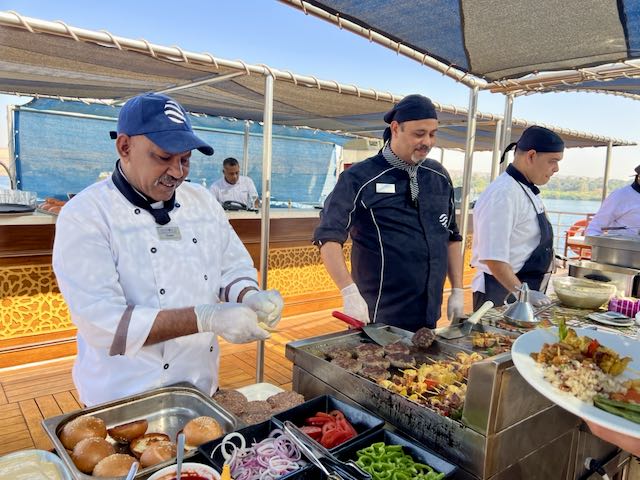

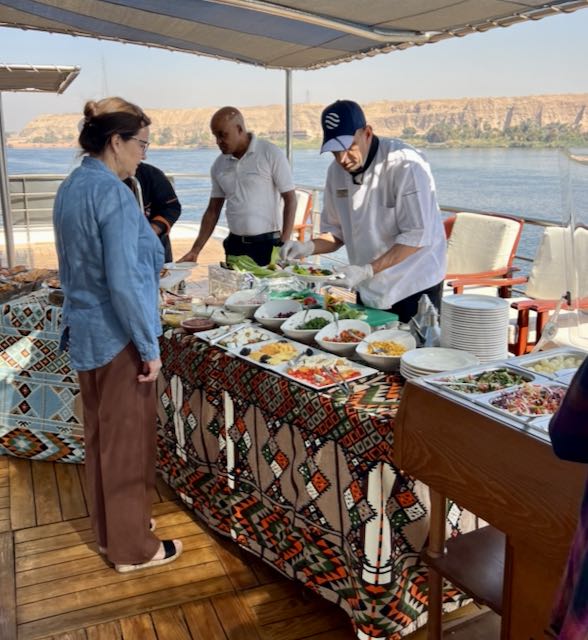
It was a lovely day to be sailing along and seeing sights along the Nile.
